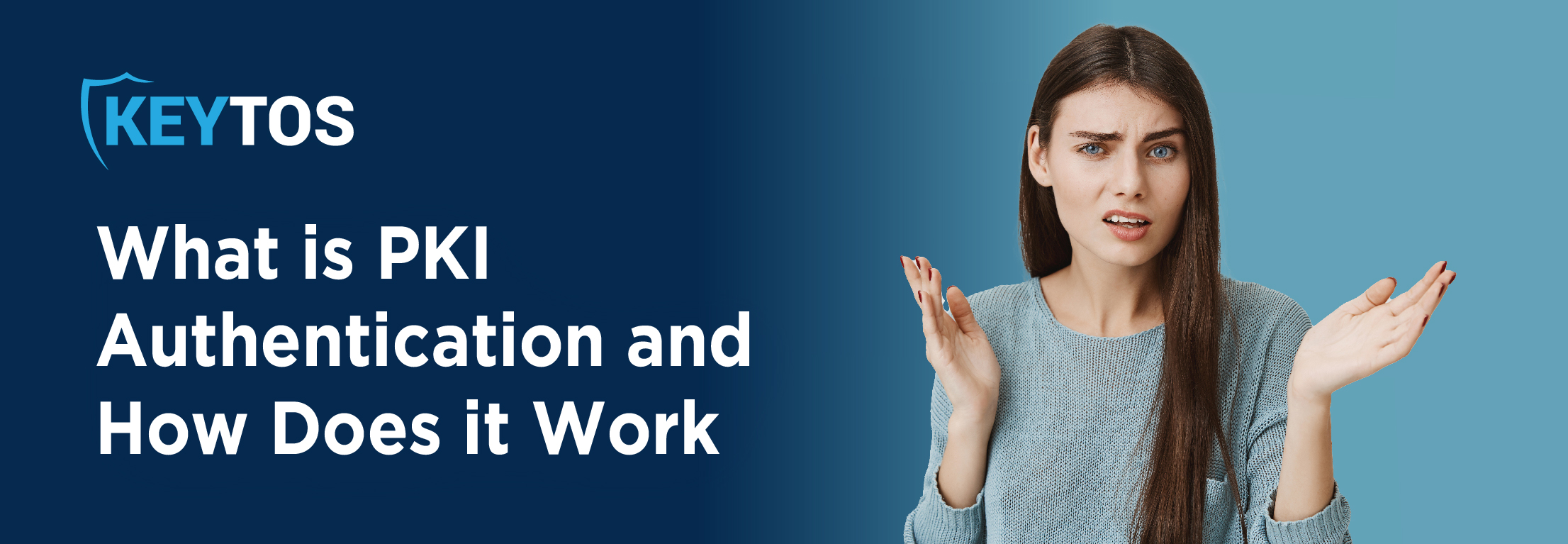
PKI (Public Key Infrastructure) authentication operates by using a certificate to verify data transferred between two points. Individuals possess a public and private key – in PKI Certificate-Based Authentication (CBA), the public key is distributed and employed to confirm the sender’s identity and to decode the data.
Currently, PKI authentication finds its use in several areas:
1) Securing email communication via encryption, using services such as S/MIME
2) Encrypting documents and signing documents to ensure their integrity
3) Providing authentication for applications
4) Safeguarding communications in IoT
PKI authentication typically involves a third-party system for certificate validation. Nevertheless, organizations can either establish their own certificate server or utilize a certificate-as-a-service to manage their internal PKI certificates and validation processes.
A common application of PKI authentication is in SSL. The presence of a locked symbol next to a website’s URL indicates the presence of CBA – without SSL, there is no way to authenticate that the server you are connecting to is the server they claim to be, you can read more about this in our MITM blog! In SSL, a third party issues the certificate, ensuring accurate, encrypted, and secure data transmission. The entire connection, including both incoming and outgoing data, is encrypted, safeguarding the communication channel.
PKI authentication offers four key advantages in the realm of digital security and data integrity. First, PKI authentication grants you the ability to authenticate the source of data. What this means is that, when data is transmitted, the recipient can be assured of its origin thanks to the PKI’s verification process. Furthermore, a third-party tool’s involvement in the process adds an additional layer of trust and security, ensuring that the entities involved in the communication are legitimate and reliable.
Second, PKI authentication enables the maintenance of data privacy. The use of private keys, which are known only to the authorized user, ensures that the data cannot be decrypted and viewed by unauthorized entities. This encryption protects sensitive information from being accessed by external parties, thus preserving confidentiality.
Third, PKI authentication plays a crucial role in safeguarding data integrity. With PKI authentication, the data remains intact and unaltered during transmission, ensuring that the information received is exactly as it was sent.
Fourth and finally, PKI authentication allows for the validation of the data source. Not only can the recipient authenticate the sender, but they can also verify and prove the origin of the received data. This feature is essential in scenarios where the authenticity and source of the data are critical, such as legal or financial transactions.
Despite its complexity, PKI authentication has become more accessible and manageable, especially with the advent of PKI as a Service (PKIaaS). PKIaaS simplifies the process by automating and managing it through cloud-based solutions – once the certificates are in place and configured correctly, the authentication process runs seamlessly without requiring constant attention from the user.
However, from an administrative perspective, managing PKI-based authentication systems can be challenging, particularly for IT departments that are already under significant pressure. The complexity of administering these systems is a notable drawback, but services like EZCA are designed to alleviate this burden by providing streamlined management and support.
While PKI authentication is widely recognized for its robust security features, it’s important to acknowledge that no security system is flawless, and PKI authentication is no exception. We’ve narrowed down the biggest disadvantages of PKI-based authentication to three:
One of the primary disadvantages of PKI authentication is the complexity involved in managing and maintaining the PKI infrastructure. Setting up PKI CBA is by no means a straightforward process and requires ongoing management by an internal IT team. Although PKI authentication is user-friendly, its management can be incredibly cumbersome. This complexity is a strong reason as to why many companies opt for PKIaaS solutions such as EZCA, which outsource the management of the PKI infrastructure to specialized service providers.
Another disadvantage of PKI authentication is the risk of permanent data loss. In situations where all keys are lost (maybe due to a data disruption or blackout, for example), there is a real possibility that the encrypted data could be lost forever. Without the keys, decrypting this data is impossible, leading to the potential loss of critical information. Using a cloud certificate authority removes the burden of backing up the keys and setting up disaster recovery procedures for your PKI.
Using PKI authentication can have a considerable impact on system performance and scalability. The process of PKI encryption is resource-intensive, meaning that as the system scales, the load on your organization’s resources can increase substantially. This can lead to performance issues, especially in systems where high-speed processing and efficiency are critical.
Despite these disadvantages, PKI authentication remains a popular choice for security management across various platforms. It is extensively used in email communications and web-based interactions and can be effectively implemented across private and even air-gapped networks with the right configuration and implementation.
Ultimately, by implementing PKI authentication in conjunction with a third-party tool like EZCA, you can greatly improve the security of your network and web traffic and the ability of your organization’s data to move freely. To learn more about how tools like EZCA can help ease the complexity of deploying PKI-based authentication, schedule a FREE consultation with one of our ex-Microsoft PKI experts today!